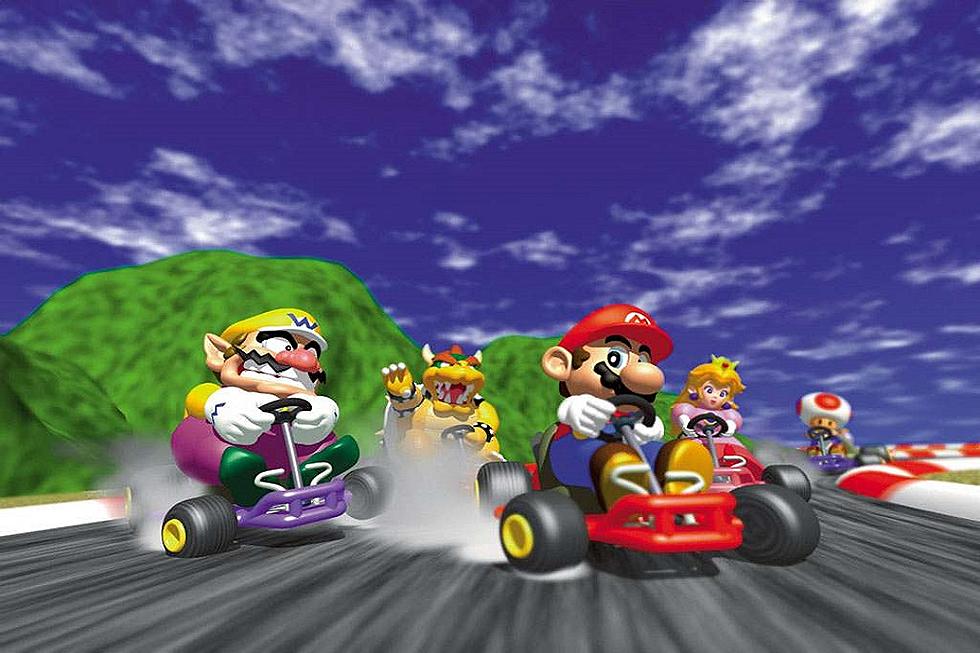
Traveling the Skies With A Flick of the Wrist in Legend of Zelda: Skyward Sword
Motion controls have always been a tricky prospect in video game history, and when you have an entire game based around the technology, it’s hit or miss on whether or not it will take. When Nintendo created the Wii-Motion Plus, a device meant to fine-tune the motion control experience of the Nintendo Wii, there was a need for a game that would sell the benefits of the peripheral. What better flagship title to drive this technology than one of the most beloved series of all time? It was on this day in 2011 that The Legend of Zelda: Skyward Sword took players to the skies to explore the origin of Link and the Master Sword.
Conception of Skyward Sword actually began immediately after Twilight Princess on the GameCube and Wii was complete in 2006. Though the game did well, longtime Zelda director Eiji Aonuma believed that it didn’t truly take advantage of the Wii’s technology as much as it could have considering it was been primarily developed for the GameCube. Aonuma wanted to use the superior technology of the Wii as a platform to create a larger, more realistic and engaging world on par with that of the then-most beloved Zelda title: Ocarina of Time.
Skyward Sword takes the series back to the very beginning. Albeit based around series protagonist Link and his quest to protect Zelda, Skyward Sword’s story is also heavily centered upon the origin of the Master Sword, which has been Link’s trusty weapon in nearly every Zelda game. The game takes place on floating islands in the clouds while the Surface is a mysterious and dangerous land below. When an evil self-proclaimed demon lord known as Ghirahim seeks to use Zelda to summon the dark lord Demise into their world and usher in destruction, Link must journey between the clouds and the Surface to save Zelda and discover the truth of Demise, Zelda, the Master Sword and their world.
Much of the control for Skyward Sword was drastically altered late in the development process by introduction of the Wii-Motion Plus. In Skyward Sword, players use motion controls more extensively than ever to engage in exploration and combat. Sprinting, rolling, climbing, jumping gaps and other actions applied to context-sensitive situations were mapped to motion control features and a few simple button presses. Meanwhile combat actually utilizes the Wii Remote and Nunchuck to control the sword and shield respectively. Players could block, defend, stab, slash and utilize strong attacks by way of the positioning and movement of both controls.
Interestingly enough, though the controls in Skyward Sword are so reliant on the Wii-Motion Plus, the motion control scheme was almost dropped all together late in development. Aonuma wanted to make the game familiar to old fans, yet fresh to new players and it became a challenge to balance the two with the new motion control format. Though initially enthusiastic about using Wii-Motion Plus in the development of the game, Aonuma found the challenges very nearly crippled the game and considered dropping it altogether. It was actually the working Swordplay segment in Wii Sports Resort that provided a much needed breakthrough in combat control for Aonuma and his team.
The Legend of Zelda: Skyward Sword may very well be one of the most divisive Legend of Zelda games ever created. It was hugely successful from a critical and financial standpoint and created a lot of buzz with its unique setting, interesting new style and innovative controls. Although it drew some flak from groups longtime fans for the motion controls and a few other unsavory aspects like a stamina meter that limits Link’s actions, the overall game made for a strong selling point as Nintendo entered the next level of motion controls with the Wii-Motion Plus.
More From Arcade Sushi
![Mario Is a Man of Many Hats in Super Mario Odyssey [Preview]](http://townsquare.media/site/550/files/2017/06/super-mario-odyssey.jpg?w=980&q=75)
![PAX East 2017: Mario Kart 8 Deluxe is More Than Just a Shiny Coat of Paint [Preview]](http://townsquare.media/site/550/files/2017/03/mk8dlx.jpg?w=980&q=75)





![The Nintendo Switch’s Initial Library Preaches Quality over Quantity [Preview]](http://townsquare.media/site/550/files/2017/01/switch-preview-4.jpg?w=980&q=75)
![Nintendo’s Next Killer App Could Be As Easy As 1,2 Switch [Preview]](http://townsquare.media/site/550/files/2017/01/1-2-switch-1.jpg?w=980&q=75)
